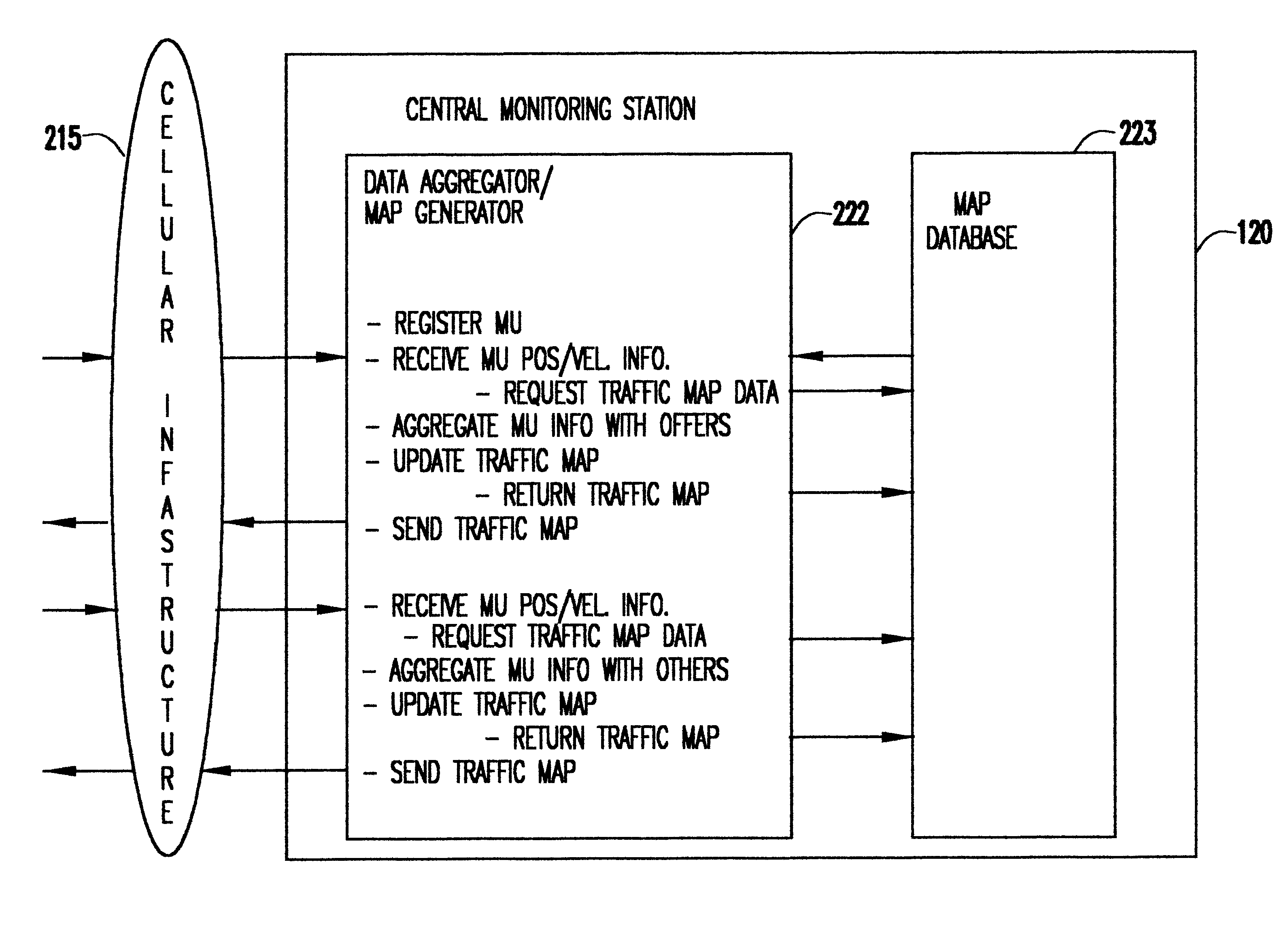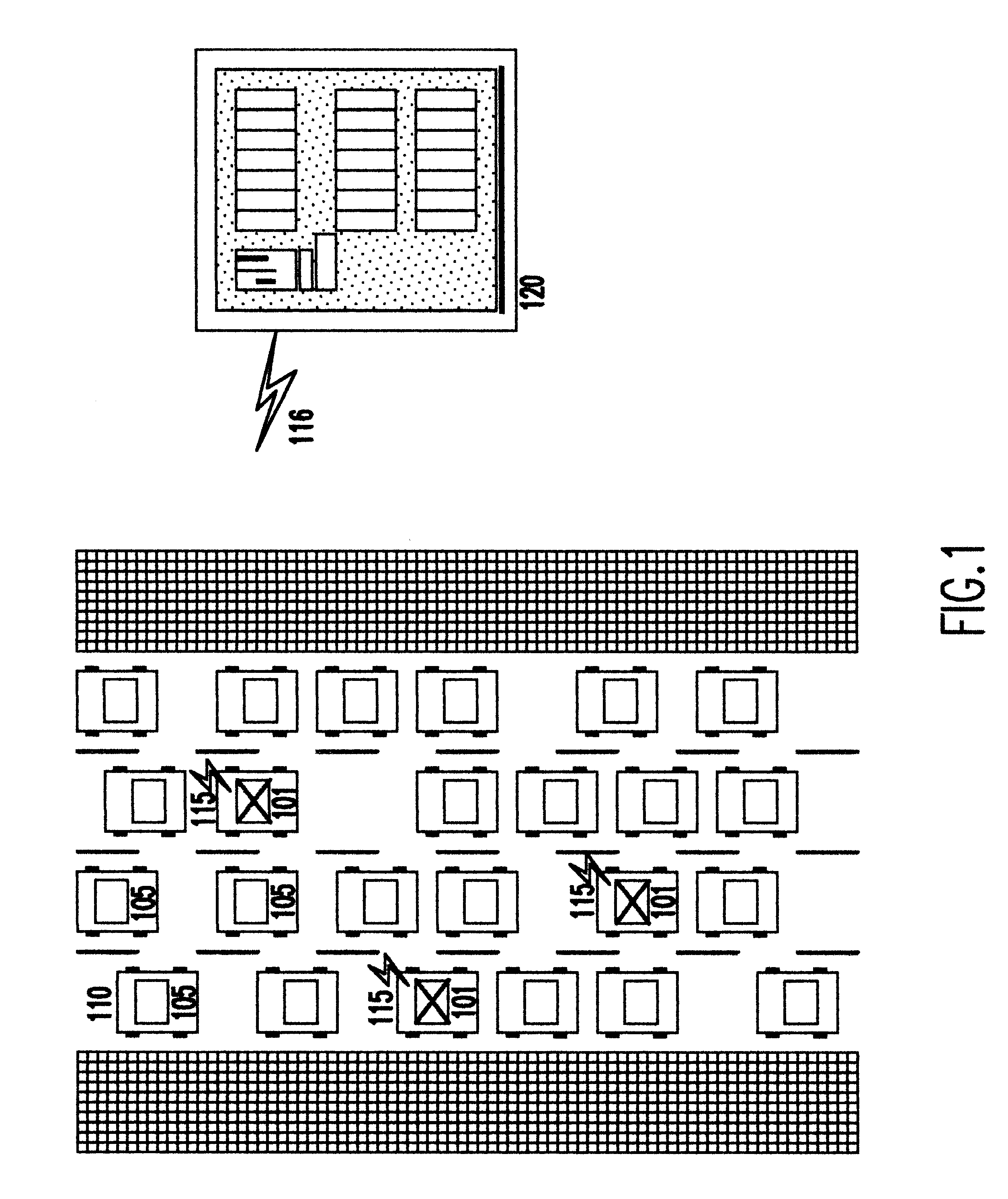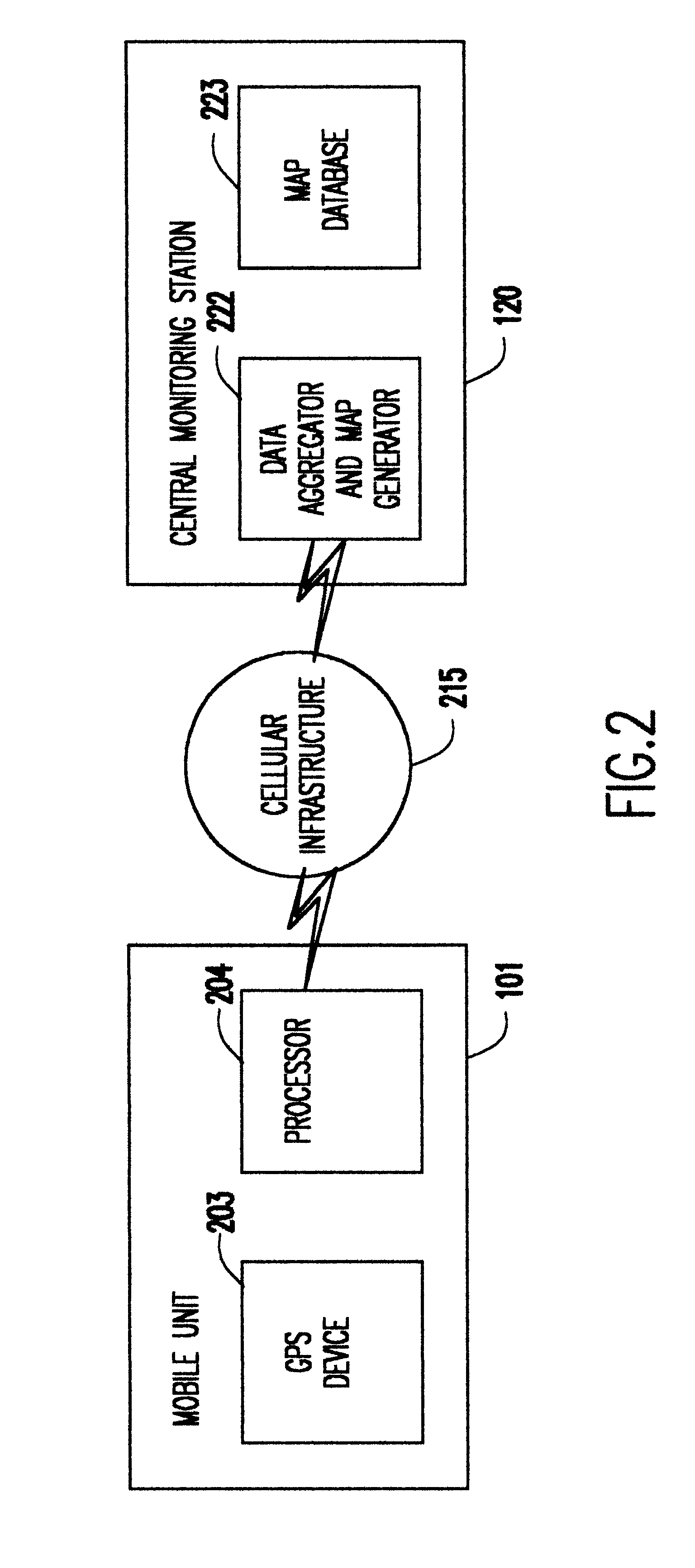Automated traffic mapping using sampling and analysis
a traffic mapping and automatic technology, applied in the field of collecting and interpreting information from mobile stations, can solve the problems of information no longer valid and too late for users to take advantage of information
- Summary
- Abstract
- Description
- Claims
- Application Information
AI Technical Summary
Benefits of technology
Problems solved by technology
Method used
Image
Examples
Embodiment Construction
Referring now to the drawings, and more particularly to FIG. 1, there is shown a plurality of vehicles on an expressway 110. Some of these vehicles 101, denoted with an "X", have mobile units installed, while the rest of the vehicles (e.g. 105) do not. The set of vehicles 101 may consist of a fleet of trucks, taxicabs, government service vehicles, or the customers of a wireless service provider.
The mobile units each include a wireless communication device, such as a cellular telephone, and apparatus, such as a GPS system, which determines the location of the vehicle in which it is installed. While a GPS receiver is the preferred location determining device, it will be understood that other location systems, such as those based on triangulation algorithms (e.g., LORAN (long-distance radio navigation system)), may be used. Position and speed information is periodically broadcast, as represented by the reference numeral 115. These broadcasts are received by neighboring vehicles and, as...
PUM
 Login to View More
Login to View More Abstract
Description
Claims
Application Information
 Login to View More
Login to View More - R&D
- Intellectual Property
- Life Sciences
- Materials
- Tech Scout
- Unparalleled Data Quality
- Higher Quality Content
- 60% Fewer Hallucinations
Browse by: Latest US Patents, China's latest patents, Technical Efficacy Thesaurus, Application Domain, Technology Topic, Popular Technical Reports.
© 2025 PatSnap. All rights reserved.Legal|Privacy policy|Modern Slavery Act Transparency Statement|Sitemap|About US| Contact US: help@patsnap.com



